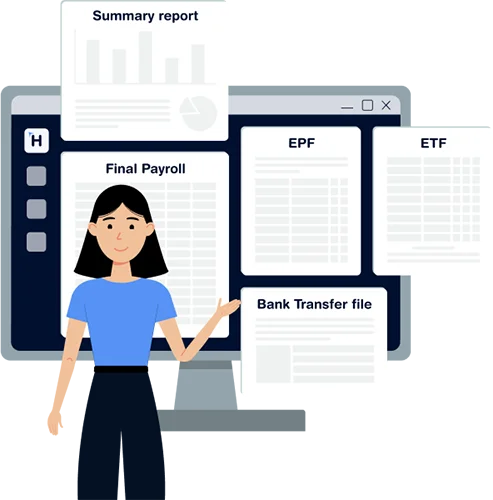In the early days of a small business, creating a basic shift plan using pen, paper, or Excel might feel like enough. But as your team grows and operations become more dynamic, shift scheduling quickly becomes a daily challenge. For Sri Lankan SMEs operating in sectors like retail, healthcare, and logistics, where multiple shifts, off days, and attendance variations are common, efficient shift management can make or break operations.
The Pain Points of Manual Scheduling
Manually managing employee schedules introduces several issues that can disrupt operations:
- Frequent conflicts and overlaps: It’s easy to double-book employees or leave gaps in coverage when relying on spreadsheets.
- Limited visibility: Employees often don’t have real-time access to their schedules, leading to miscommunication or missed shifts.
- Increased administrative time: Managers spend hours adjusting schedules, responding to availability changes, and manually communicating updates.
- No data history: Tracking changes, accountability, or identifying chronic absenteeism is difficult without proper records.
These problems grow as the number of employees or operational sites increases. What worked for 5 employees in one location doesn’t work for 20 spread across two branches.
Why SMEs Need Shift Scheduling Software
Modern shift scheduling software, often included in HRIS systems like Humanised, solves these challenges and introduces game-changing benefits:
- Real-Time Visibility: Employees can instantly view their upcoming shifts through their mobile or web app, improving punctuality and accountability.
- Automated Scheduling Rules: You can set standard hours, off days, and shift patterns to reduce repetitive planning.
- Reduced Human Error: Automated validations help avoid scheduling two people for the same task or skipping legal rest breaks.
- Integration with Attendance: Scheduled shifts are synced with attendance tracking, simplifying payroll processing and no-pay calculations.
Supporting Employee Wellbeing and Satisfaction
Transparent, reliable shift scheduling shows your employees you value their time. Being able to check their schedule in advance, request changes, and avoid last-minute surprises leads to:
- Higher employee morale
- Lower absenteeism
- Better work-life balance
This kind of operational predictability is a subtle but powerful contributor to employee satisfaction and retention, key concerns for growing SMEs.
Business Outcomes: Productivity, Efficiency, and Reduced Costs
From a business perspective, smart shift scheduling improves:
- Operational Coverage: Ensures every shift is adequately staffed
- Resource Allocation: You avoid overstaffing during quiet times or understaffing during rush hours
- Payroll Accuracy: Avoids costly errors from miscalculated hours or unapproved overtime
This directly supports better productivity and more predictable payroll costs — both of which matter deeply to small and medium-sized business owners.
Why Now? The Digital Push in Sri Lanka
As Sri Lankan SMEs navigate economic challenges, efficient resource management is no longer optional. With the rise in digital adoption across industries, from e-commerce to service businesses, shift scheduling software is a natural next step.
Cloud-based HRIS platforms with built-in shift scheduling features are now accessible, affordable, and scalable. You don’t need IT expertise or expensive infrastructure, just a willingness to move beyond manual methods.
Choosing the Right System
When evaluating shift scheduling software or HRIS tools, look for:
- Custom shift rules and templates
- Real-time updates for employees
- Attendance integration
- Flexibility for part-time or contract workers
- Mobile access for on-the-go coordination
These features ensure that your scheduling system fits your actual business needs, rather than forcing you to adapt your operations around rigid tools.
Ready to Make the Switch?
If managing shifts is taking too much time, causing confusion, or leading to payroll errors, it might be time to consider shift scheduling software. For growing SMEs, it’s not just a convenience, it’s a strategic advantage.



